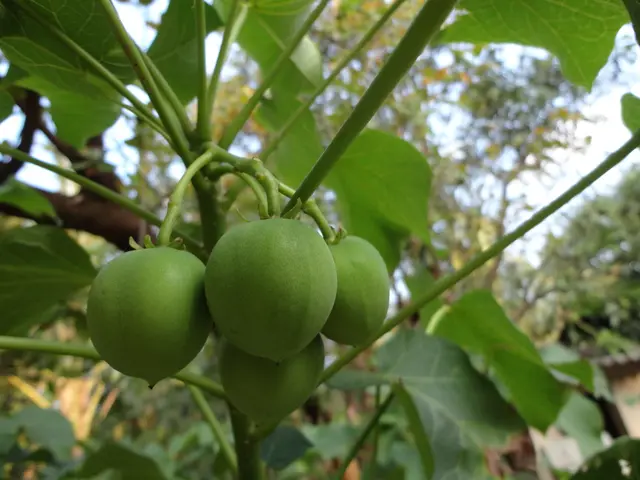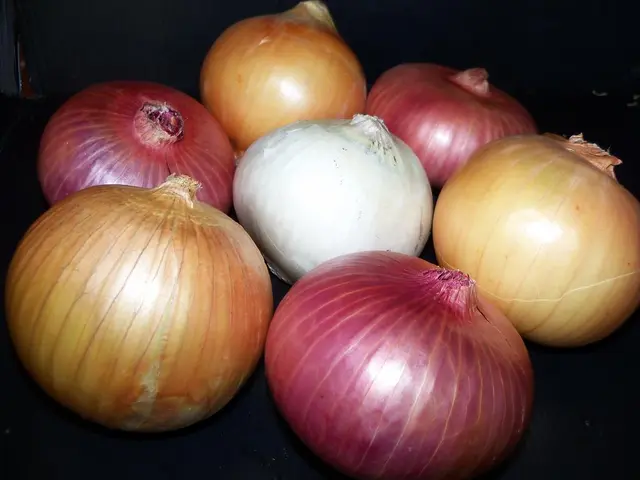Squash Mishaps: Avert Disasters and Secure Success
Growing summer squash can be a delightful experience, but it comes with its fair share of challenges. I like to call it a "feast or famine" crop - you might have an abundant harvest one year and none the next. To help you achieve a bumper crop this year, let's take a closer look at common issues that arise when growing squash and how to avoid them.
Planting Squash
Starting seeds indoors too soon
If you're planning to germinate squash seeds indoors, be mindful not to start them too early. Squash plants aren't fan of transplanting, as their root systems can be easily disturbed. Aim to transplant your seedlings when they have only developed four true leaves. Transplanting earlier than that can lead to stunted growth.
Planting outside too soon or during cold weather
It's important to wait for the right time to transplant your squash seedlings into the garden. Make sure nighttime temperatures remain consistently around 50 degrees or higher before planting, and protect your transplants if a cold snap threatens. Remember, squash is a summer crop, but covering them during a cold spell is not always enough to fully protect them.
Growing Squash
Not growing in fertile soil or proper drainage
Squash thrive in rich, well-draining soil. If you notice your squash plants struggling to grow, consider adding organic matter like compost to improve soil fertility. In regions with poor-draining soil, consider growing squash in raised beds, containers, or by creating a hill of compost to ensure proper drainage.
Not watering enough
Squash plants suffer from drought stress easily, as their roots are shallow and only penetrate about 6 inches into the soil. Regular watering and mulching can help maintain the optimal moisture level for your squash plants.
Lack of pollination
Squash flowers require bees for proper pollination. Female flowers have a miniature squash at the base, while male flowers have no fruit. The male flowers produce pollen, which needs to be transferred to the female flowers for fruit development. If bees are scarce, you can help pollinate manually by gently rubbing the male flower's petals against the female flower.
Waiting too long to harvest
As a general rule, pick your summer squash when it reaches 6 to 8 inches in length. Smaller squash tend to be more tender and flavorful. If you miss a squash, don't throw it away! Shred it for zucchini bread or feed it to your chickens.
Blossom end rot
Blossom end rot is characterized by a soft, brownish spot at the base of the squash. It happens when the plant isn't getting enough calcium, often due to inconsistent watering. To prevent blossom end rot, maintain consistent watering, especially if you're growing squash in containers.
Battling Pests and Diseases
Squash face several threats from insects and diseases. Here are some common pests and diseases and how to address them:
Squash vine borer
The squash vine borer is a black moth with a red dot on its wings. It lays eggs near the base of the plants, and the larvae burrow into the vine to feed. If you notice your squash plants wilting, check for signs of sawdust around the base of the plant. There isn't always a way to save a vine borers-infested plant, but you can remove the infested parts to prevent the beetles from spreading.
Squash bugs
Squash bugs feed on the sap of squash leaves and can weaken the plant. They can be controlled organically with insecticides formulated for soft-bodied insects, but prevention is key. Strategies include monitoring for eggs and manually removing them, using row covers, or planting squash late in the season when the bugs have finished their lifecycle.
Cucumber beetles and bacterial wilt
These beetles can carry bacterial wilt, a devastating disease for squash plants. Cover the plants with floating row covers early on to protect them from the beetles, especially in regions prone to the pest. If bacterial wilt is detected, immediately pull the infected plants and discard them.
Powdery mildew
Powdery mildew can affect squash plants, especially in humid, cooler conditions. Preventive measures, such as maintaining good air circulation and avoiding overcrowding, can help. Choose squash varieties resistant to powdery mildew to further reduce the risk.
Viruses
Viruses can also afflict squash plants, causing symptoms such as mottled leaves, twisted or curled leaves, and green-looking warts on the fruit. While there is usually no cure for viral infections, the fruit can still be eaten.
By following these tips and addressing common issues, you can ensure a bountiful harvest of summer squash this season. Happy gardening!
How about these three sentences:
- For the best garden productivity, consider subscribing to a 'garden podcast' or downloading 'garden printables' for helpful tips on avoiding common mistakes like forgotten watering or inadequate soil conditions.
- The 'home-and-garden' lifestyle isn't only about planting and harvesting; it's also about educating oneself on gardening techniques and latest trends, such as improving soil quality or controlling pests and diseases like squash vine borers or powdery mildew.
- In addition to enjoying the fruits of their labors, garden enthusiasts can also share their knowledge with others by publishing blogs, podcasts, or even creating 'garden printables', resourceful tools for the gardening community.








